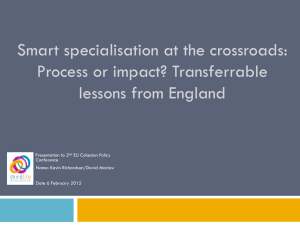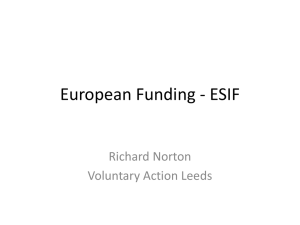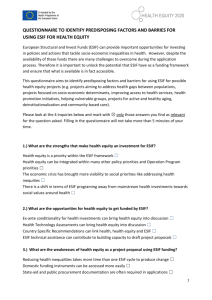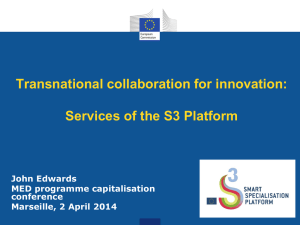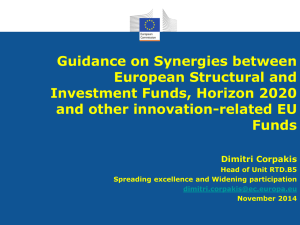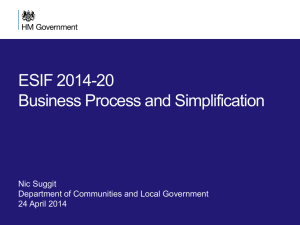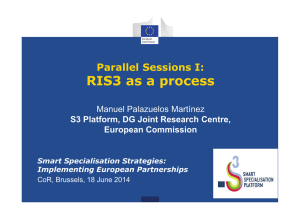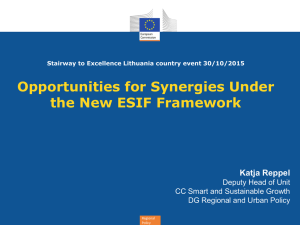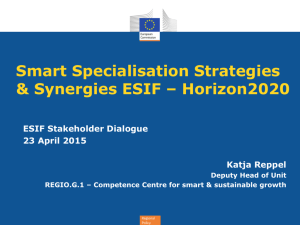Hervé DUPUY Deputy Head of Unit Broadband Unit (DG
advertisement
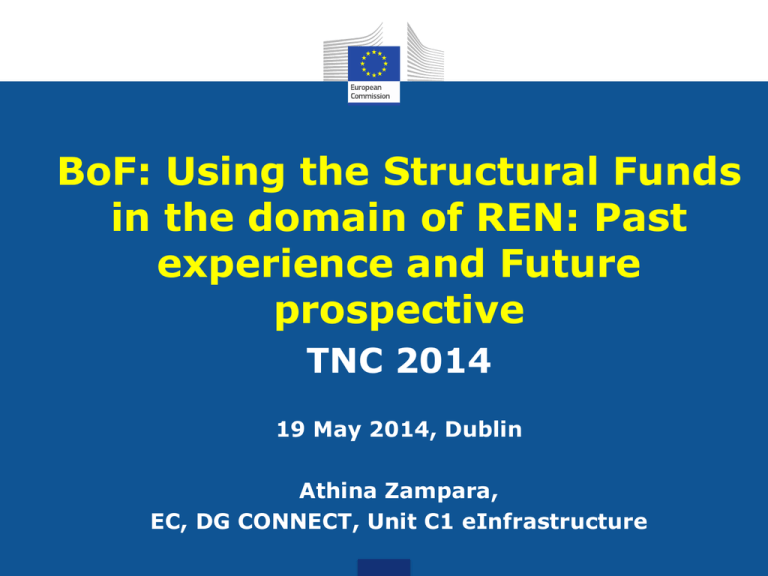
BoF: Using the Structural Funds in the domain of REN: Past experience and Future prospective TNC 2014 19 May 2014, Dublin Athina Zampara, EC, DG CONNECT, Unit C1 eInfrastructure Past, present and future: • - NRENs have already used SF to develop and upgrade their services • - Presentations from CZ, HU, PL • - Greece: • Apart from the REN, they are developing HPC activities (procurement of HPC system to be operational in second half of 2014, data storage system) • - Cyprus has plans to request ESIF funding ESIF/Thematic Objectives 2014-2020 (of possible interest to NRENs) TO1. Research and Innovation Ex-ante conditionality: 1. A national or regional smart specialisation strategy is in place 2. Multiannual plan for investment in Research and Innovation (e.g. updated roadmap of research infrastructure) TO2. Information and Communication Technologies Ex-ante conditionalities: 1) Digital Growth strategic policy framework 2) National/Regional NGN plans in place. RIS3 • Strategy planning for MS: Research and Innovation Strategies for Smart Specialisations (RIS3) – S3 Platform (provides advice for the design of RIS3, information on the emerging fileds of smart specialisation priorities) What is new? Synergies • The European Commission and the Member States are mandated to ensure • - coordination • - synergies and • - complementarities • between the European Structural and Investement Funds (ESIF), Horizon 2020 and other EC programmes (COSME, Erasmus+, etc) Synergies … • - are about obtaining more impacts on competitiveness, jobs and growth by combing ESIF and Horizon 2020 • This can be achieved by: • - cumulative funding (use different public funding sources in one project, programme, group of projects • - funding of successive projects or parallel projects Attention to • - Non substitution principle (the use of a union funding instrument to substitute the non-union contribution to another union instrument is not allowed) • - ESIF support is subject to State Aid limitations (whereas Horizon 2020 funding is not) • - Overlaps and double-financing must be avoided • - Objectives of the projects must align with the RIS3 Novelties for ESIF • - More ESIF (<10%) can be spent outside OP territory – if for the benefit of the programme area • - Emphasis on innovation • - National Contact Points close to national and regional ESIF policy makers and Managing Authorities Opportunities • - To receive funding to further develop NRENs in general as an eInfrastructure provider if appropriate (network, data, hpc services) – Plan where you want to be in 2020! • Research and education community • Public administration • Private domain (e.g. research SMEs) • - To bridge the digital divide with the less developed countries • - To help national policies align with european priorities Questions • - Do you need to take stock of what has happened in the past? • - Does TERENA know what NRENs plan to request from MS for ESIF funding? • - Are there complimentary needs to GEANT that ESIF money could be used for? • - Could ESIF funding be used for helping the less developed countries? • - Could ESIF funding be used for boosting innovation (eg supporting private research SMEs) Obstacles to synergies • - Do we know what are the main obstacles to using ESIF funding? • past • now and for the future • - What NRENs did to overcome the obstacles? • CYNET's suggestion: if they knew what other NRENs did, they could use this information for lobbying in their country Potential threats? • - Protect Geant's from politically motivated topdown choices • - Protect Geant's self-regulated regime Next steps • - Investigate your country's RIS3 • - Consult the S3 platform • - Contact the Managing Authorities of the respective Operational Programmes • - Contact the National Contact Points • - See the multiannual plan for R&I in your country and the roadmap for Ris – make sure NRENs are there. • Actions at EC level • - What do NRENs need in order to be able to request and use ESIF funding? • concrete actions for EC? • Ask for specific support
